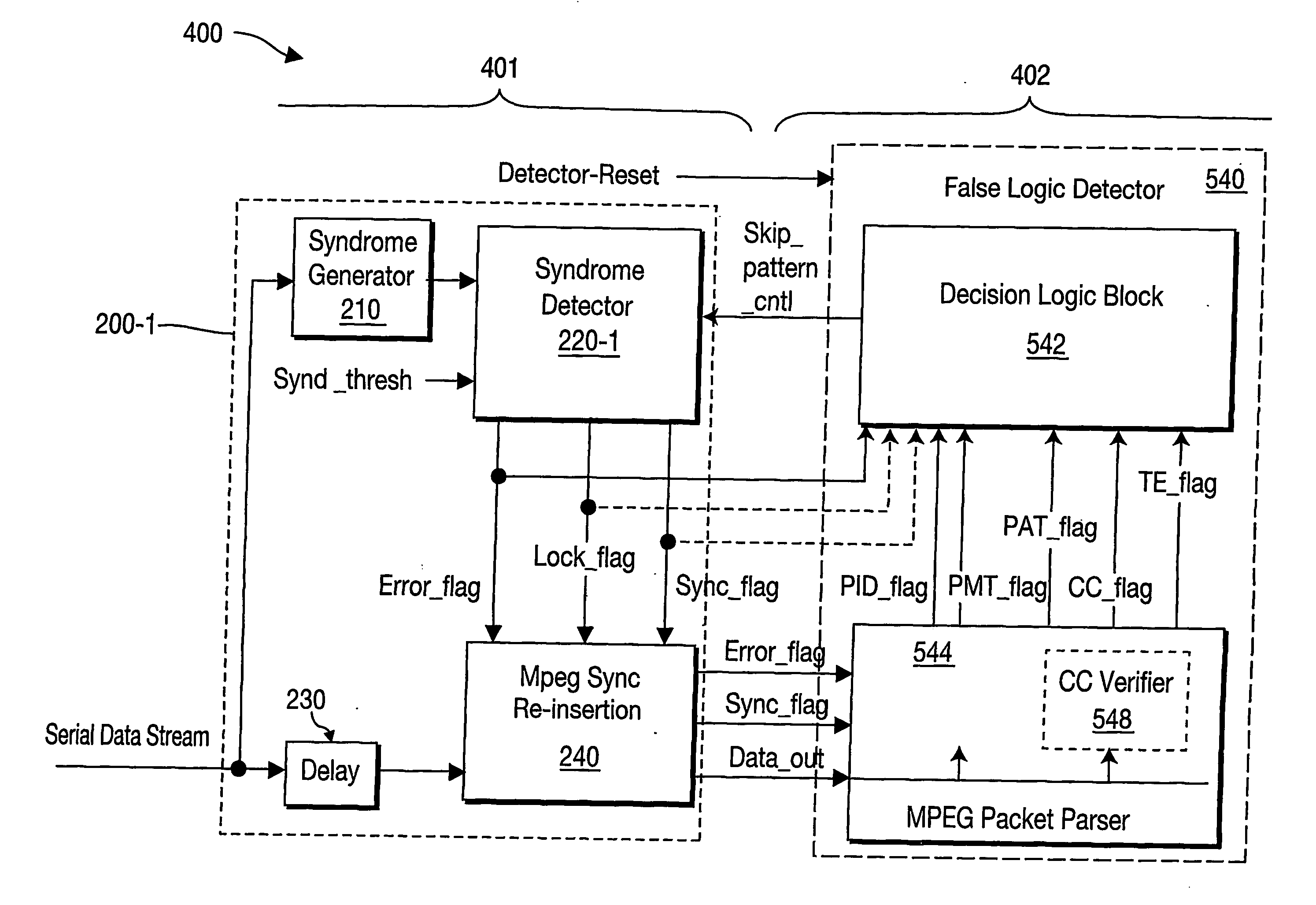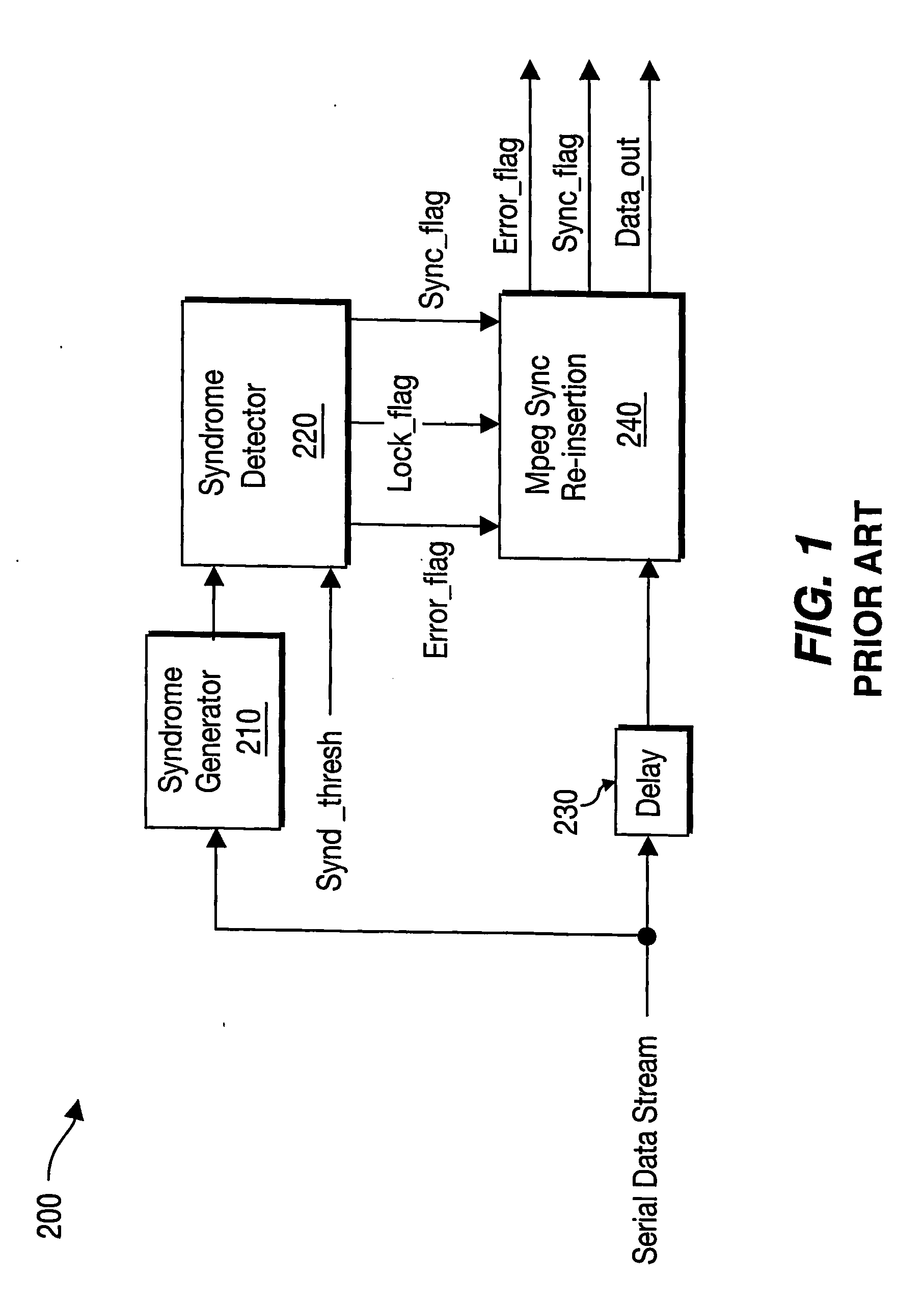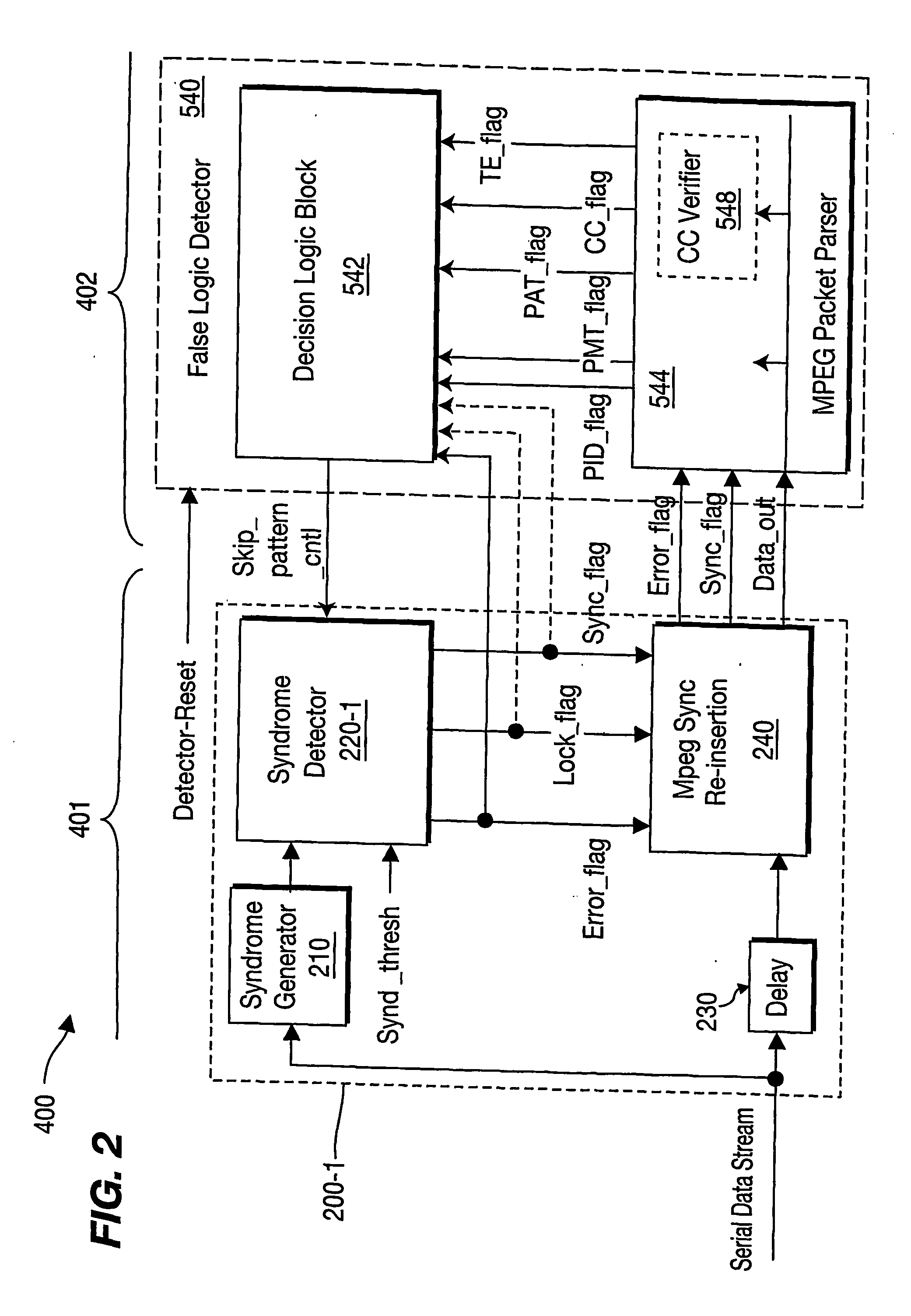Method and Apparatus for False Sync Lock Detection in a Digital Media Receiver
a digital media receiver and false sync lock technology, applied in the direction of synchronisation signal speed/phase control, color television with bandwidth reduction, television systems, etc., can solve the problems of packet error, high coding gain at moderate complexity and overhead, and increase the probability of false sync lock detection
- Summary
- Abstract
- Description
- Claims
- Application Information
AI Technical Summary
Benefits of technology
Problems solved by technology
Method used
Image
Examples
Embodiment Construction
[0070]FIG. 2 is a block diagram showing a MPEG-2 framing block 200-I including a Syndrome Detector 220-I adapted to receive and to comply with a “resync” (resynchronize) command skip_pattern_cntl by unlocking and by trying to locate a (different, subsequent) sync-byte position-candidate (different from the detected sync-byte position currently locked to), and to lock to that different detected sync-byte position. The False Lock Detector 540 generates and outputs the skip_pattern_cntl command to the Syndrome Detector 220-I.
[0071]As previously mentioned, since the parity check block code in the MPEG framing block (200-I) is not very powerful, its decoder (210) may indicate several positions in a packet (position-candidates) where a possible sync byte could be found, when only one position is the correct one, and the Syndrome Detector 220-I may false lock and output a false Sync_flag, a false Error_flag and a false Lock_flag.
[0072]The False Lock Detector 540 is adapted to detect a fals...
PUM
 Login to View More
Login to View More Abstract
Description
Claims
Application Information
 Login to View More
Login to View More - R&D
- Intellectual Property
- Life Sciences
- Materials
- Tech Scout
- Unparalleled Data Quality
- Higher Quality Content
- 60% Fewer Hallucinations
Browse by: Latest US Patents, China's latest patents, Technical Efficacy Thesaurus, Application Domain, Technology Topic, Popular Technical Reports.
© 2025 PatSnap. All rights reserved.Legal|Privacy policy|Modern Slavery Act Transparency Statement|Sitemap|About US| Contact US: help@patsnap.com



